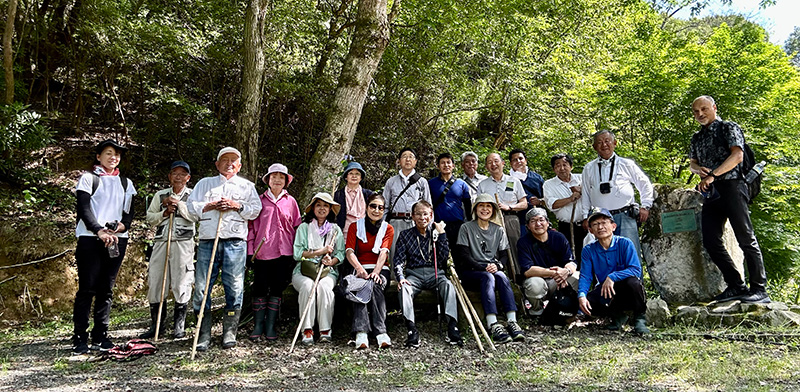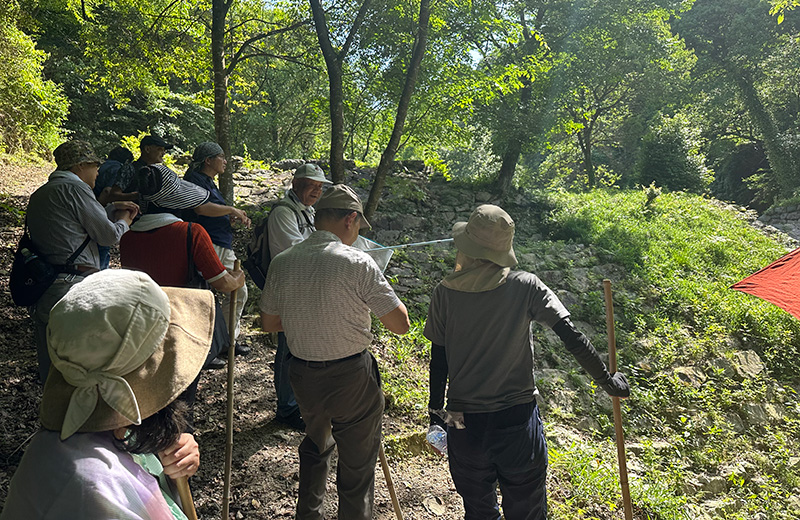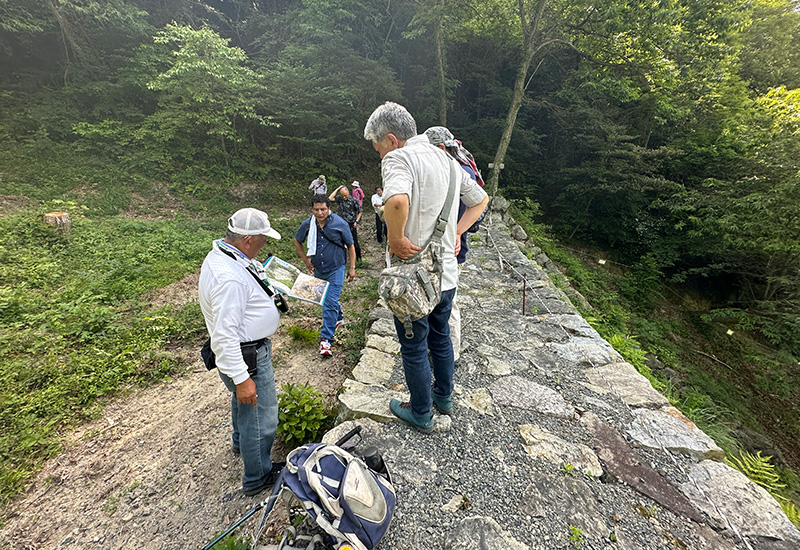NPO NEPA officials visit the site
On 27 May 2023
In Ashida-town, Fukuda, Fukuyama City, Hiroshima Prefecture, a ‘Bessho Sunadome’ was constructed in the Mid to late Edo for disaster prevention to prevent sediment from flowing out during rainfall. On 27 May 2023, 12 people from the NPO NEPA (Nepal Emergency Shelter & Disaster Prevention Educational Aid) in Osaka Prefecture visited the site, and five members of the Bessho Sunadome wo Mamoru Kai, a local association involved in activities to preserve the Sunadome, gave them a tour of the site.
About NPO NEPA

NEPA is an organization led by Nepalese and Japanese people living in the Kansai region that promotes disaster education in Nepal and was established after the 2015 Nepal Earthquake Relief Project was launched to provide reconstruction assistance following the Nepal Earthquake in 2015. The project is currently working on building a model of a place that can be used as a shelter in the event of a disaster in the country, as well as preparing the on-site environment for disaster preparedness education and activities led by members who are qualified disaster management professionals.
Contents of the inspection tour

After taking a commemorative photograph at No. 4 Sand Reservoir, the group was guided by Mr. Mitsunari, Chairman of the Bessho Sand Reservoir Protection Society, up to No. 10 Sand Reservoir, which is ‘the highest weir among the sand reservoirs of the Edo period.’ Mr. Mitsunari explained that the Sand Dome had been repaired after it was damaged by a landslide during the heavy rainfall in July 2018, that the weir built in the early Edo period still functions today and is helpful for local disaster prevention, and that local volunteers are carrying out conservation activities.
While they arrived at No. 10 Sunadome, where they could look down on the foothills, and took a break, Ram Maharajan, a musician from Nepal and a member of the inspection team, played a bamboo flute called ‘bansuri.’ He performed several songs, including Nepalese mountain songs and ‘Sukiyaki song’ (Ue wo muite arukou). The pleasant sound echoed in the village mountains, and the group listened to the performance as it flowed along with the refreshing breeze.
NEPA Representative Director Morita, a cultural anthropologist, said: ‘This is the first time we have worked outside Osaka in Japan. I came here imagining that I would have to go through the bush, but I was surprised to find that the trails have been developed and maintained through the efforts of the local people. I am learning about how landslides have been prevented in this area since ancient times was a good opportunity. I am very grateful to the members of the protection group who guided us around the area”.



